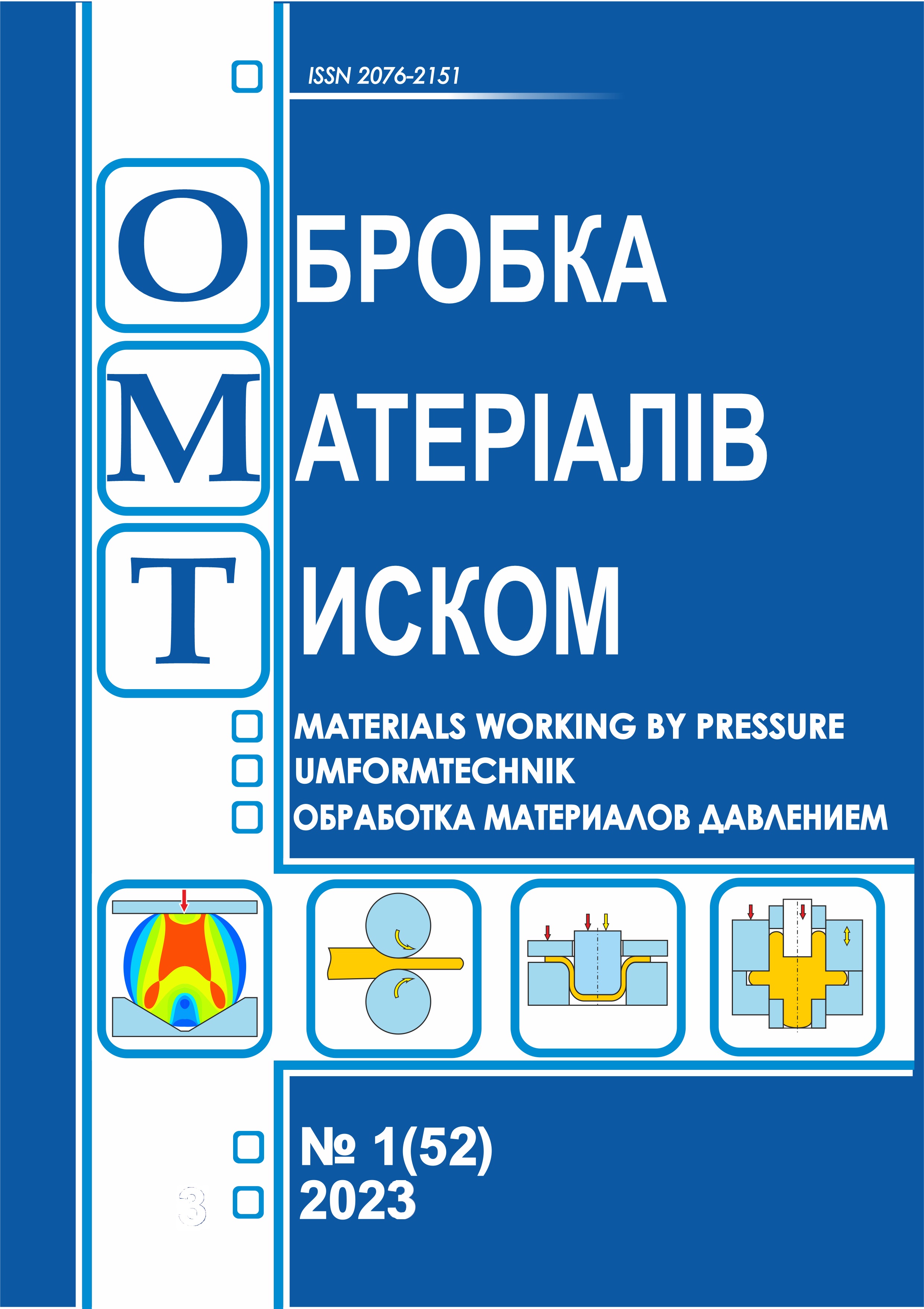The influence of technological parameters asymmetric rolling on the physics and mechanical properties of titanium powder sheets
DOI:
https://doi.org/10.37142/2076-2151/2023-1(52)126Keywords:
asymmetric rolling, temperature, pressive force, green strength, plasticity, interparticle contact, local shear.Abstract
Gogaev K., Voropaev V., Podrezov Yu., Minakov M., Vdovychenko O. The influence of technological parameters asymmetric rolling on the physics and mechanical properties of titanium powder sheets
To work out optimal technological modes of asymmetric rolling for obtaining titanium powder sheets. with maximum raw strength, a complex approach was used, which involves the study of the influence of several technological factors: deformation scheme (symmetric and asymmetric rolling), rolling temperature, force on the rolls and protective medium. The studies have shown that asymmetrical rolling method allows to significantly improve the mechanical properties of titanium powder sheets compared to symmetric rolling due to the shear component of the deformation, which improves the conditions of contact formation at the inter-particle boundaries. The optimal conditions asymmetric rolling for obtanong strengtyning titanium sheets are: a temperature interval of the rolling process Tr = 200-400 oC and a pressing force N ~100 kN. Under these conditions, the powder sheets demonstrate the highest green strength in the range σf = 800 MPa and dynamic characteristics approaching the values characteristic of compact titanium. After asymmetric rolling at 200 oC, the sheets have the highest hardness Нμ = 200-215 MPa. This value is significantly higher than that of recrystallized titanium, but is significantly inferior to the values of microhardness obtained on titanium samples deformed by severe plastic deformation methods. Relatively low hardness, as well as the invariance of the geometric dimensions of the sheets after different modes of deformation, indicates the local nature of intense shear at the interparticle boundaries, which enhances the process of contact formation The use of a protective atmosphere allows to increase strength and plasticity but the sheets remained relatively brittle, their maximum deformation before failure did not exceed ε= 1.5 %.

